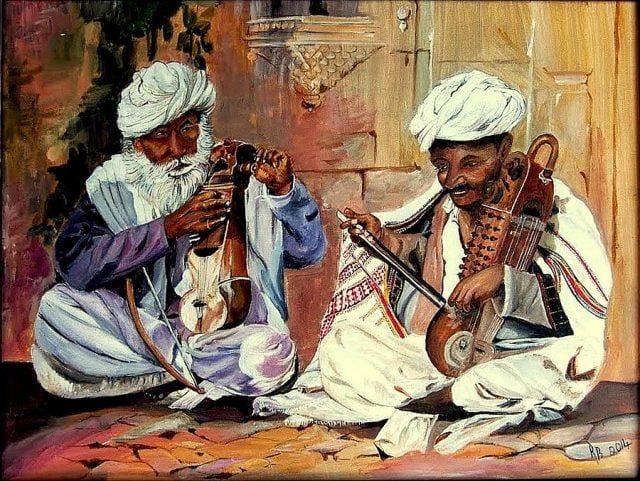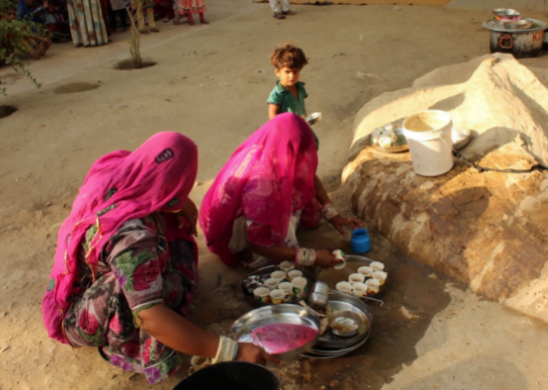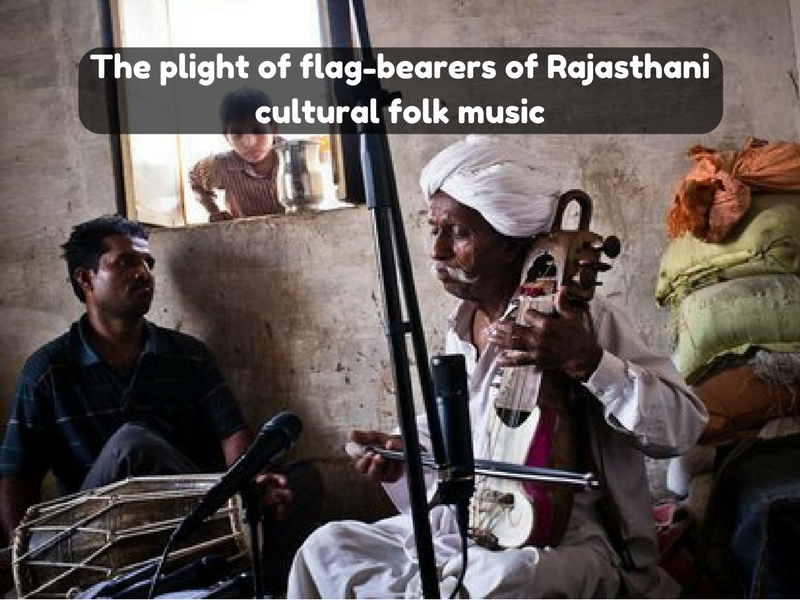Disclaimer: Originally published in December 2017. It is being republished since it still remains an interesting topic till today.
Rajasthan is a land of a combination of various cultures due to overtaking of the throne from time to time in different periods of history. This combination of cultures gave birth to the Manganiyar/Merasi community of artists who performed for Raja-Maharajas.
Some history for context
These artists were the ‘lower caste’ people who performed for the ‘upper caste’ i.e. the Kshatriyas. These people took Hindu names and followed Hindu religious customs and practices despite being Muslims.
This was done in order to have financial support from wealthy Kshatriyas and landlords in order to keep the culture of the land alive.
So, every time you visit a small city/town in Rajasthan and see a person or a group perform, they are from this very community i.e. Manganiyar.

The problem with the term Manganiyar
Now, manganiyar in the local language means a beggar, the Hindi translation being ‘maangne wala’. This term for the Merasi community was used to categorise them as untouchables.
This community did low wage tasks for the upper castes and sang for them on occasions like childbirth, marriage etc.
I don’t think I need to highlight how the term is a disrespect to the community!
The entire culture and folk music of Rajasthan has lived through the Merasi community, and referring them as a group of beggars is extremely derogatory not only to them but to the art of music itself.
Also, read: Demystifying The Tradition Of Johar Where Rajput Women Chose Honour Over Life

The people of the Merasi community have learned and performed music as a hierarchal job and take pride in what they do. Many of them have represented India on international platforms, however, referring to them as beggars gives off a very negative image of our country.
The exploitation of the Manganiyar community
A few years ago, one of the singers from the community was killed because the so-called ‘upper caste’ faith healers were not impressed by his performance. The horror unfolded on the entire community in the Dantal village so much that it resulted in an exodus.
This caste and class construct was supposed to be dissolved by the Constitution. However, many local villages of Barmer and Jaisalmer still have demarcation in villages separating the manganiyars from the upper caste.

Many of them still depend on their ‘Jajman’ so much that they still live without electricity and education. They still perform for meager income and often for just a bottle of alcohol which has now given birth to another problem in the community i.e. of alcohol addiction.
The fading interest to take folk music forward
All this has resulted in an entire generation of the Merasi community which has lost interest in learning the art or preserving the ancient instruments that their ancestors possessed. The government in Rajasthan hasn’t helped them either.

BPL cards only promise ration while the people are killed and murdered without any reason. Many still serve as servants not being aware of their rights. Others sing for mere 2 square meals a day.
The Ashok Gehlot government promised the community 400 plots in the DNT category, only 2 such plots have been allotted by now. Tourism has further exploited the community.
Tourists visiting Rajasthan treat these people like cats and dogs instead of appreciating their effort to keep the art alive.
To top it all, they are still the ‘manganiars’. An entire community dedicated their lives to flourish the Rajasthani art and culture via the folk music of the land, only to be called a tribe of ‘beggars’.
Picture Credits: Google Images
Sources: Wikipedia, Times Of India, The Hindu
You’d like to read:
‘Ghoomar’ By Rani Padmavati Is Totally Wrong, This And Other Flaws From The Movie































Nice
every single word is like fire to stop this kinda disrespect to ppls maintaining art nd culture from years….